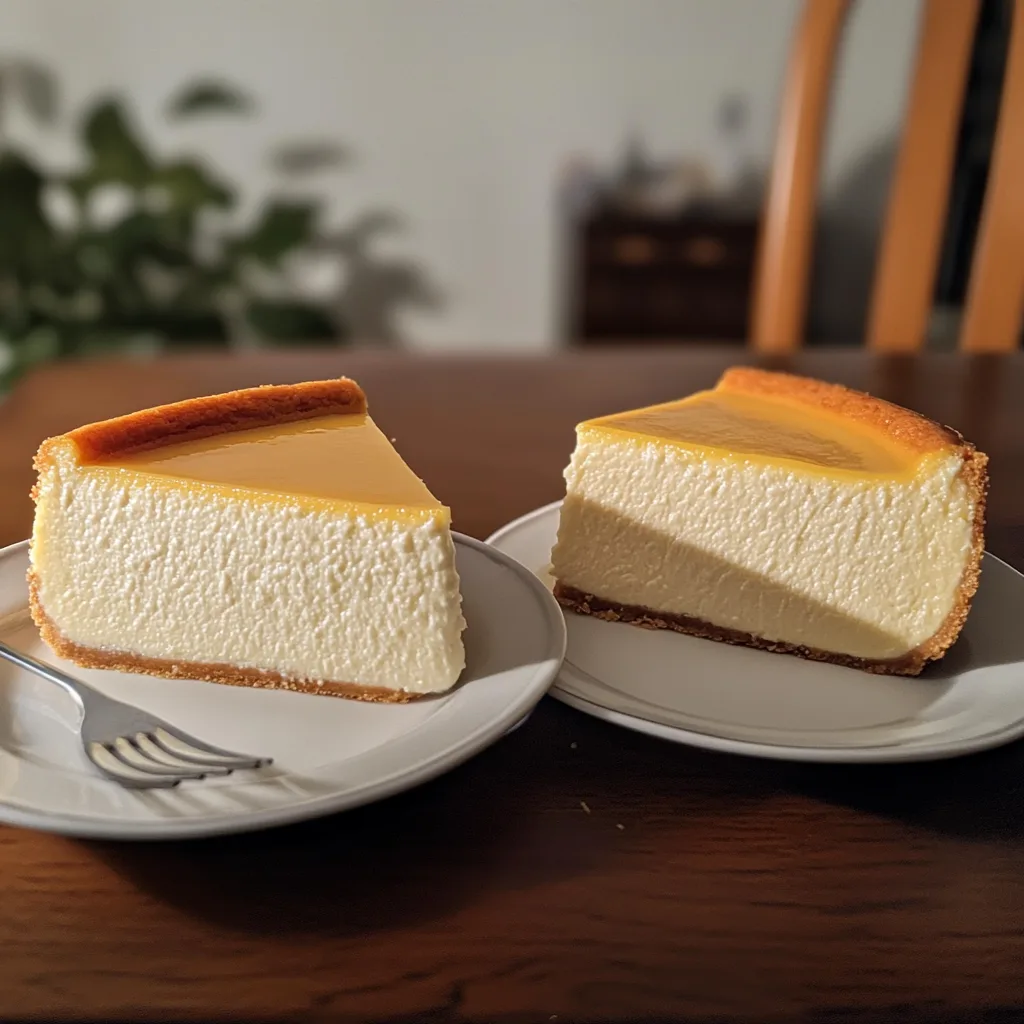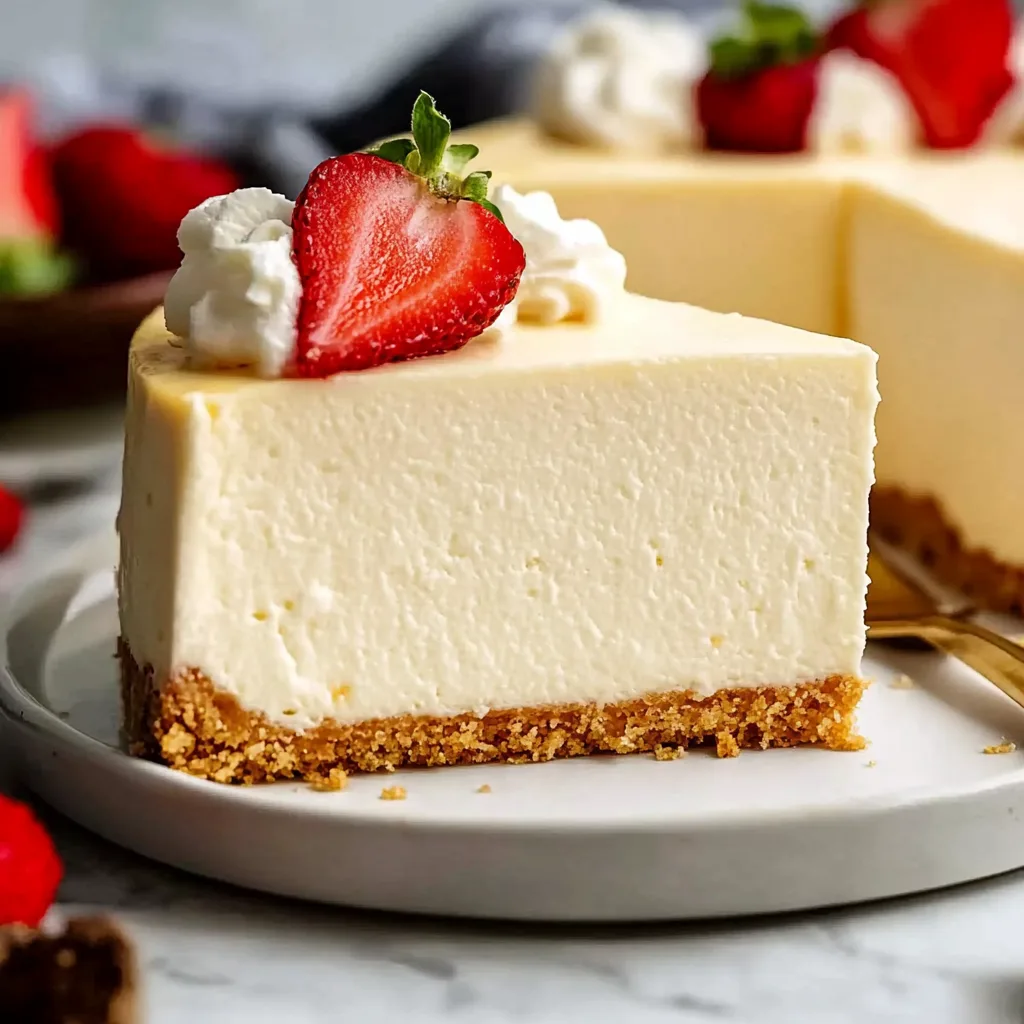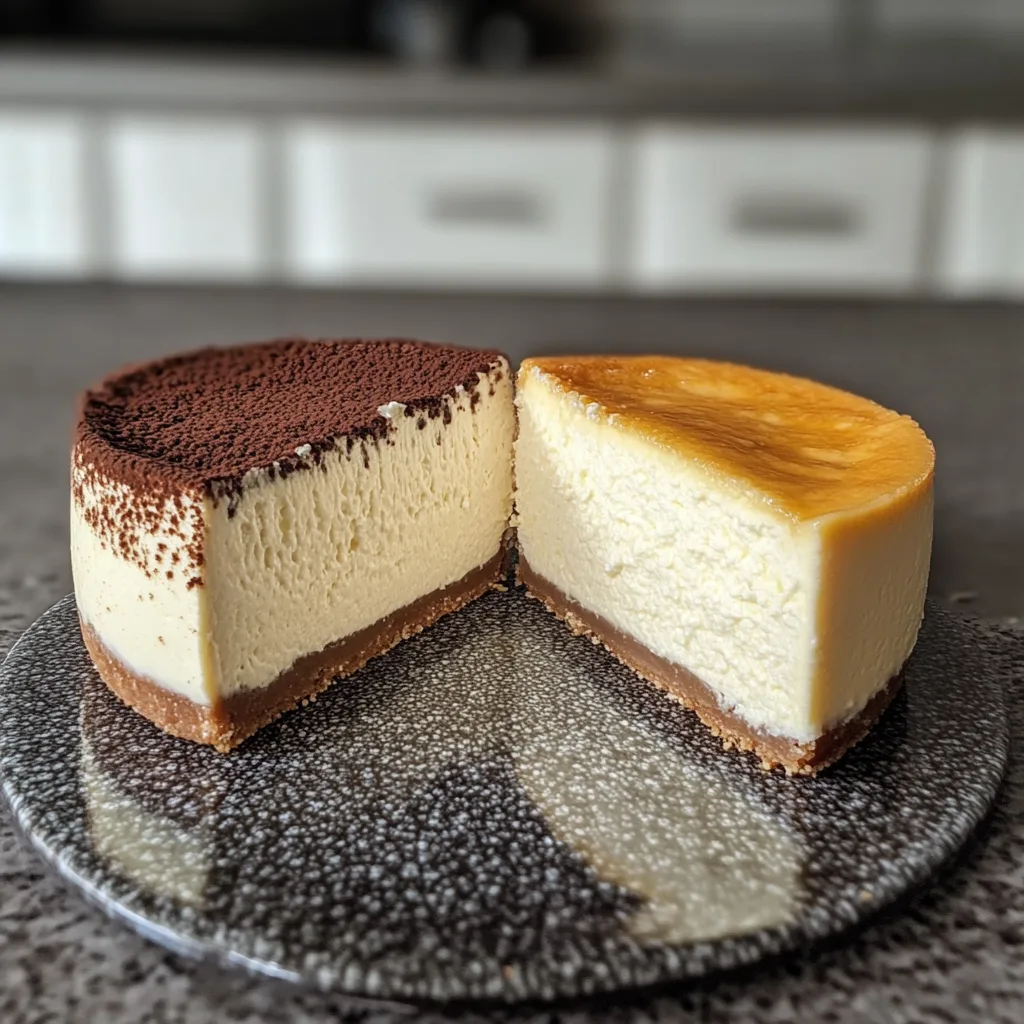What Does Adding an Extra Egg to Cheesecake Do?
Cheesecake is a timeless favorite, cherished for its creamy, indulgent texture and rich flavor. Each ingredient in a cheesecake recipe plays a critical role, but eggs stand out as particularly important. They shape everything from the dessert’s structure to its smooth consistency. But what does adding an extra egg to cheesecake do? Does it enhance the flavor or alter the texture in unexpected ways?
In this article, we’ll uncover how eggs influence cheesecake recipes, examine the effects of adding an extra egg, and share practical tips for achieving the ideal balance. Whether you’re troubleshooting common baking issues or experimenting with new variations, this guide is your go-to resource for understanding the impact of eggs in cheesecake.
Let’s get started and learn the science behind the perfect slice!
Table of Contents
The Role of Eggs in Cheesecake
The Essential Functions of Eggs in Cheesecake
Eggs are the unsung heroes of cheesecake recipes, providing much more than just a way to bind the ingredients together. They create a silky texture and support the structure without making it too heavy. When you bake cheesecake, the proteins in the eggs coagulate, forming a stable yet soft framework that holds everything in place.
Another key function is moisture retention. Eggs help keep your cheesecake from drying out by locking in water, giving you that smooth, creamy mouthfeel. Without eggs, you might end up with a cheesecake that’s crumbly or unevenly set.
Why Eggs Are Key to a Cheesecake’s Success
Eggs also enhance the flavor profile of the cheesecake. While they don’t take center stage in terms of taste, they subtly balance the richness of cream cheese and sweetness of sugar. This delicate harmony is what makes a cheesecake feel indulgent yet not overwhelming.
Moreover, eggs act as emulsifiers. They blend fat and liquid components seamlessly, ensuring your batter is uniform and free of lumps. This is especially important when combining heavy ingredients like cream cheese and sour cream, where consistency is key to avoiding a clumpy disaster.
Without eggs, you’d be hard-pressed to achieve the luscious texture we associate with a classic cheesecake. From creating a custard-like consistency to contributing to structural integrity, eggs are the cornerstone of any successful cheesecake recipe.
If you’re looking for more cheesecake inspiration, check out our Strawberry Cheesecake Dump Cake Recipe, which offers a creative twist on classic cheesecake flavors.
What Happens When You Add an Extra Egg?
Texture Changes Caused by an Additional Egg
Adding an extra egg to your cheesecake recipe might sound like a small adjustment, but the impact can be significant. Eggs contribute heavily to the texture, and adding more shifts the balance. When you include an extra egg, the cheesecake becomes firmer and denser. This happens because eggs contain proteins that set during baking, creating a tighter structure.
While this might be desirable in some cases, it can also leave your cheesecake feeling less creamy and more custard-like. For instance, if you’re aiming for a light and airy texture, adding another egg could work against you. However, for those who love a cheesecake that feels solid and rich, an extra egg might be just the tweak you need.
It’s worth noting that the impact on texture depends on the recipe’s other ingredients. If you’ve got plenty of cream or sour cream in your batter, the extra egg might balance things out instead of tipping the scales too far.

The Science Behind Eggs and Cheesecake Structure
Eggs aren’t just about flavor and texture—they’re also about chemistry. Adding an extra egg increases the number of proteins in the batter, and as these proteins coagulate, they form a network that traps air and moisture. This network is what gives cheesecake its structure.
However, too many eggs can lead to problems. When baked, the extra protein can cause the cheesecake to over-firm, sometimes even leading to cracks on the surface. Why? Overcooking proteins makes them tighten too much, squeezing out moisture. This is why baking a cheesecake low and slow is essential, especially when you’ve added more eggs than the recipe calls for.
To find the right balance, consider how dense or creamy you want your cheesecake. Adding an extra egg can make a big difference, and understanding this helps answer the question, what does adding an extra egg to cheesecake do?
Common Issues with Too Many Eggs in Cheesecake
Overly Dense Cheesecake: A Common Result
One of the most frequent problems with adding too many eggs is ending up with an overly dense cheesecake. Instead of the velvety smooth texture most people adore, the cheesecake can feel heavy and overly compact. This happens because eggs act as binders, and when overused, they create too much structure, leaving no room for softness.
If you find that your cheesecake has become too dense, it could be a sign that the egg-to-cream ratio is off. Some recipes can handle an extra egg, but others are less forgiving. It’s always a good idea to experiment cautiously and make notes for next time.
Risk of Cracking
Another issue with extra eggs is cracking. Too many eggs increase the likelihood of overcooking, and as the cheesecake cools, it contracts and splits. While the taste isn’t affected, those unsightly cracks can be disappointing, especially if you’re aiming for a picture-perfect dessert.
To prevent cracks, try these tips: bake the cheesecake in a water bath to regulate temperature, avoid overmixing the batter (which introduces excess air), and don’t overbake. Remember, the cheesecake should still jiggle slightly in the center when you pull it out of the oven.
Understanding these challenges is key to mastering your recipe and truly answering, what does adding an extra egg to cheesecake do? The right adjustments can mean the difference between a dreamy, creamy dessert and a disappointing baking experience.
Adjusting Recipes with Extra Eggs
Situations Where Adding an Extra Egg Works
Adding an extra egg isn’t always a mistake—it can sometimes enhance your cheesecake depending on what you’re aiming for. For example, New York-style cheesecakes, which are known for their dense and rich texture, often benefit from an extra egg. The added protein helps create that signature firmness and creamy consistency that fans love.
In contrast, if you’re making a lighter-style cheesecake, like a no-bake or whipped variation, adding an extra egg might be counterproductive. These styles rely on a delicate balance of airiness and cream, and too many eggs could weigh the dessert down.
Additionally, recipes that include more liquid ingredients like heavy cream or sour cream can usually handle an extra egg without issue. The additional moisture offsets the extra protein, ensuring your cheesecake stays creamy without becoming rubbery.
Balancing Other Ingredients
When adding an extra egg, it’s crucial to tweak the other ingredients. Start by increasing the sugar slightly to maintain the right level of sweetness. Eggs tend to mute flavors, so adjusting sugar helps avoid a bland result.
Another adjustment to consider is the fat content. Adding a splash of cream or increasing the cream cheese ensures the batter remains soft and luscious, even with the additional structure from the extra egg. Finally, don’t forget about bake time—cheesecakes with more eggs may need a few extra minutes in the oven, but be careful not to overbake, as this can lead to cracks.

Comparing Egg-Based and Egg-Free Cheesecakes
Differences in Texture and Flavor
Egg-based cheesecakes have a unique richness and velvety texture that’s hard to replicate. The eggs provide structure, giving the dessert a custard-like consistency that holds its shape well. In contrast, egg-free cheesecakes—often made with gelatin or cornstarch as thickeners—tend to be lighter and less dense. They’re perfect for those who prefer a more delicate dessert or have dietary restrictions.
Flavor-wise, egg-based cheesecakes tend to be richer because of the emulsifying properties of eggs. Eggless versions may taste slightly more tangy or creamy, as they rely more heavily on cream cheese and other flavor-forward ingredients.
Which Option Works Best for Specific Preferences
If you’re looking for a dessert that feels luxurious and indulgent, egg-based cheesecakes are the way to go. However, if you’re catering to vegan guests or want something less heavy, an egg-free option could be the better choice.
The beauty of cheesecake is its versatility. Whether you use eggs or not, both versions can be customized to suit any flavor profile or occasion. To experiment with egg-free options, try substituting eggs with yogurt or silken tofu for a smooth, creamy alternative.
FAQs on Adding Eggs to Cheesecake
How Many Eggs Should You Add to a Cheesecake?
The ideal number of eggs depends on the style of cheesecake you’re making. Most classic cheesecake recipes call for 2 to 4 eggs per 8 ounces of cream cheese. If you’re making a dense, rich New York-style cheesecake, you might use more eggs to create a firmer structure. On the other hand, lighter cheesecakes or no-bake varieties might require fewer or no eggs at all.
Adding an extra egg can make a significant difference. For those wondering, what does adding an extra egg to cheesecake do, the answer lies in the texture and firmness. More eggs mean more protein, resulting in a denser and creamier consistency.
Can You Add Egg Yolks Instead of Whole Eggs?
Yes, substituting egg yolks for whole eggs is possible, but it will affect the outcome. Egg yolks are rich and creamy, which can enhance the custard-like quality of a cheesecake. However, they don’t provide as much structure as whole eggs because they lack the firming proteins found in egg whites.
If you’re aiming for a softer, silkier texture, adding extra yolks might work well. Just be cautious not to overdo it, as too many yolks could make the cheesecake overly rich and heavy.
What to Do If You Add Too Many Eggs by Mistake?
Accidentally adding too many eggs can happen to the best of us. The good news? You can often balance the batter by increasing the amount of cream cheese or heavy cream. If the batter is already mixed, bake it at a lower temperature and monitor it closely to avoid overcooking. The result might not be perfect, but it’ll still be delicious.
Expert Tips for Perfect Cheesecake Every Time
Baking Techniques for Optimal Texture
Getting the texture just right is a delicate process, and it starts with how you bake the cheesecake. Using a water bath is one of the best ways to maintain an even temperature and prevent cracking. Wrap your springform pan in foil, place it in a larger pan, and pour hot water around it before baking. This simple step ensures a creamy, smooth texture.
Another tip is to avoid overmixing the batter. Overmixing introduces too much air, which can cause the cheesecake to puff up in the oven and then collapse as it cools. Instead, mix ingredients on low speed until just combined.
Timing is also critical. Pull the cheesecake out of the oven while the center still jiggles slightly. This prevents overbaking, which can lead to dryness and cracking.
Testing Variations with Egg Quantities
Experimentation is part of the fun of baking. If you’re curious about what does adding an extra egg to cheesecake do, try making small adjustments to your favorite recipe. Start with one extra egg and note the changes in texture and flavor. Keep track of your tweaks to see what works best for your preferences.
For those who enjoy a firm and dense cheesecake, an extra egg can be a game-changer. But if you prefer a softer, mousse-like dessert, stick to the recipe as written or consider reducing the eggs slightly. Baking is as much about personal preference as it is about science.
With these tips in mind, you’re well on your way to crafting the perfect cheesecake every time. Whether you’re sticking to the classics or experimenting with egg-free options, there’s a recipe out there that’s just right for you.
